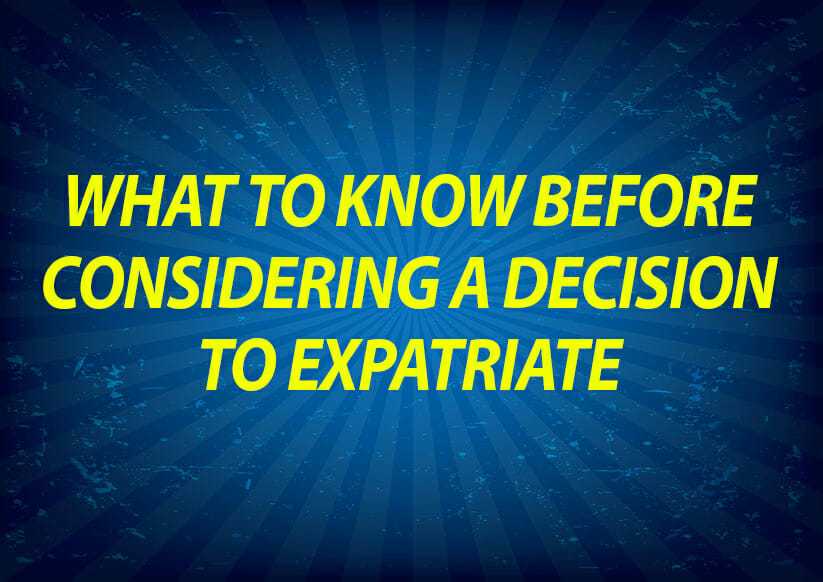
SECTION 877 AND EXPATRIATION
IRC Section 877 virtually eliminates most of the tax benefit sought by expatriation (a decision to expatriate by moving out of the U.S. and denouncing citizenship or turning in a green card) as 877 requires the continued taxation of U.S.-source income for 10 years after the loss of U.S. citizenship or green card by wealthy Americans.
THE EXIT TAX
For all taxpayers that expatriate after June 16, 2008, the new Internal Revenue Code §877A applies. IRC 877A imposes a mark-to-market regime, which generally means that all property of a covered expatriate is deemed sold for its fair market value on the day before the expatriation date and taxed on gains exceeding $600,000 indexed for post-2008 inflation.
For purposes of this code section a “covered expatriate” is one whose average annual net income is more than a specified amount that is adjusted for inflation ($145,000 for 2009 and 2010, $147,000 for 2011, and $151,000 for 2012) or whose net worth is $2 million or more on the date of expatriation or termination of residency. However, an expatriate will not be treated as meeting the tax liability test or the net worth test if the expatriate became at birth a U.S. citizen and a citizen of another country and, as of the expatriation date, continues to be a citizen of, and is taxed as a resident of, such other country, and has been a U.S. resident for not more than 10 taxable years during the 15 taxable year period ending with the taxable year during which the expatriation date occurs; or the expatriate relinquishes U.S. citizenship before the age of 18 1/2 and has been a U.S. resident for not more than 10 taxable years before the date of relinquishment.
IRC 877A(g)(4) provides that a citizen will be treated as relinquishing his or her U.S. citizenship on the earliest of four possible dates: (1) the date the individual renounces his or her U.S. nationality before a diplomatic or consular officer of the U.S., provided the renunciation is subsequently approved by the issuance to the individual of a certificate of loss of nationality by the U.S. Department of State; (2) the date the individual furnishes to the U.S. Department of State a signed statement of voluntary relinquishment of U.S. nationality ; (3) the date the U.S. Department of State issues to the individual a certificate of loss of nationality; or (4) the date a U.S. court cancels a naturalized citizen’s certificate of naturalization.
For purposes of computing the tax liability under the mark-to-market regime, a covered expatriate is considered to own any interest in property that would be taxable as part of his or her gross estate for Federal estate tax purposes. Under section 877A(a)(3), the amount that would otherwise be includible in gross income by reason of the deemed sale rule is reduced (but not to below zero) by $600,000, which amount is to be adjusted for inflation for calendar years after 2008 (the “exclusion amount”). For calendar year 2009, the exclusion amount as adjusted for inflation was $626,000. The amount of any gain or loss subsequently realized will be adjusted for gain and loss taken into account under the mark-to-market regime without regard to the amount excluded. Pursuant to section 877A(b), a taxpayer may elect to defer payment of tax attributable to property deemed sold.
















